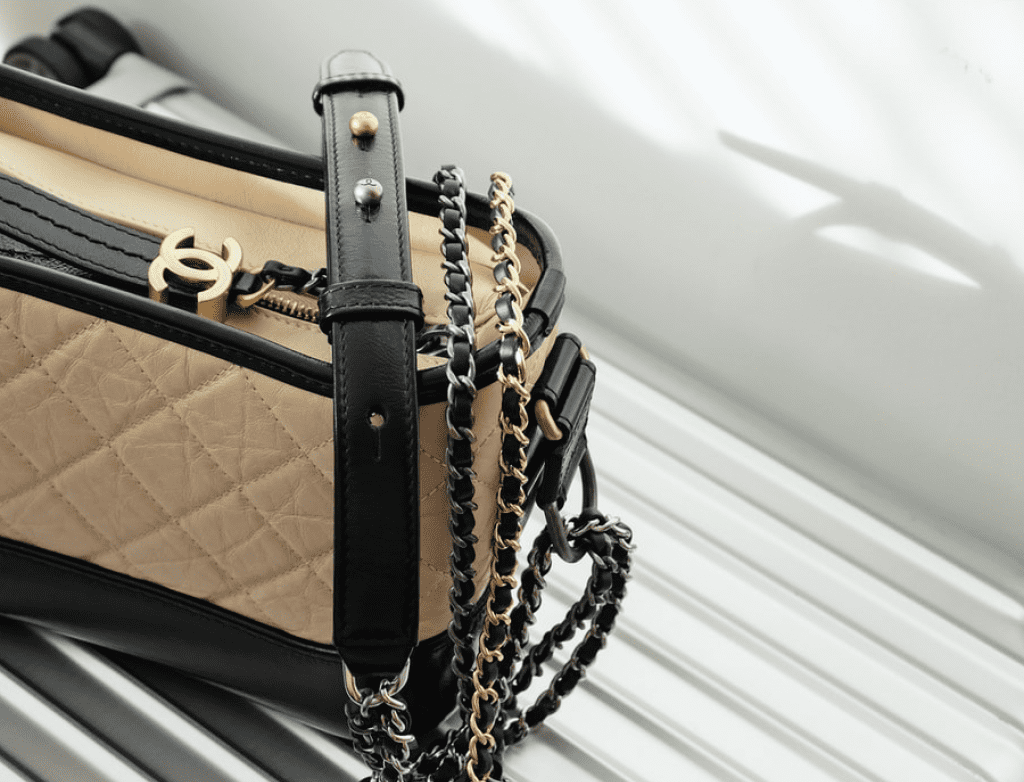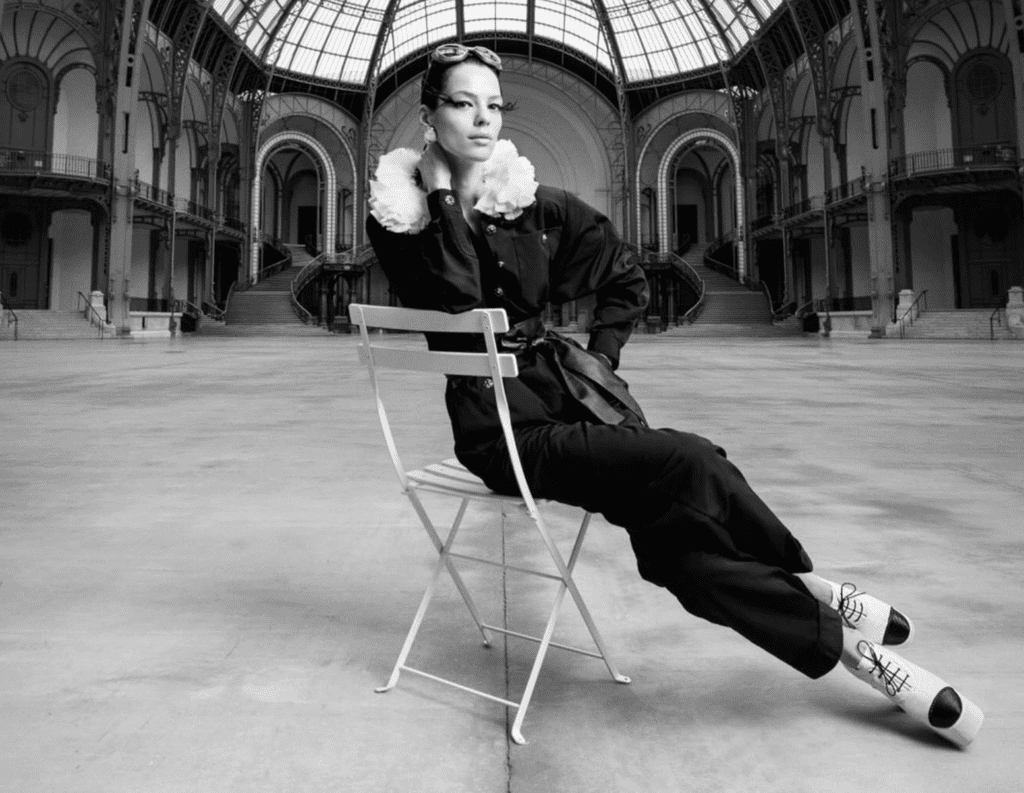 image: Vetements
image: Vetements
Highsnobiety has declared Vetements dead. After identifying slash-price wares from the Paris-turned-Swiss-based brand across the web and talking to buyers, many of whom testified to the wild drop in demand for Demna Gvasalia’s label, Vetements has been deemed “completely dead” from a retail standpoint. The bold claim comes less than three years after the menswear site’s Alec Leach says “the world stood up and really took notice” (the date at hand coincides with the brand’s Spring/Summer 2016 show complete with those DHL tees).
The proclamation of death (which you can read in its entirety right here) comes just over four years after Vetements debuted its first-ever collection for Fall 2014 by way of a lookbook that was shot in Demna Gvasalia’s Paris apartment. The collection – which was the work of “a collective of designers” led by Gvasalia – consisted of oversized proportions, pieced-together denim with jagged hems, booties with makeshift lighters-for-heels, asymmetrically-cut skirts, sleeve-less jackets rendered into dresses, and hooded sweatshirt frocks.
In the small handful of years and collections since then, Vetements has skyrocketed to fame. The sentiments surrounding the brand have tended to consist of: “Vetements has become so influential so fast, it’s hard to believe it’s less than three years old,” “Vetements is the industry’s darling ‘it’ brand – so much so it’s hard to believe it is six seasons old,” “What Is Vetements and Why Is Everyone Freaking Out?,” or as Leach puts it, “It wasn’t long before the world went Vetements mad. The brand’s pieces sold out whenever they dropped, and celebrities couldn’t get enough of it either (I guess having Kanye West and Travis Scott sit at your show does wonders).”
Vetements was underground (very literally for Fall/Winter 2015, when its show was held in the basement of Paris’ famous gay club Le Depo). It was spontaneous. It was (in more ways than one) very much in the vein of Martin Margiela – who, in the fashion industry, despite (or maybe because of) his 10 year or so absence is both a cult-god and am intriguing mystery. Gvasalia worked for Margiela a few years prior before jumping ship and ultimately tiring of Louis Vuitton, thereby giving rise to the project known as Vetements. “For the fashion industry,” wrote Leach, “the brand’s irony, massive silhouettes and edgy styling were a breath of fresh air.”
And in no time at all, Vetements was everywhere. As Nicola Fumo put it so aptly for Racked, in the blink of an eye, Vetements was “in Vogue, worn by street style stars like Chiara Ferragni and Miroslava Duma, stocked everywhere from Net-a-Porter to Nordstrom (really!), and an LVMH Prize finalist.”
Gvasalia has called his – and his team’s – work for the brand “very intuitive,” which very well may be true. However, one could certainly make an air-tight case that Vetements’ success is more soundly characterized as a calculated practice in careful branding, marketing, shock, and endorsement. These elements, taken together, after all, helped catapult Vetements to the backs of the industry’s most influential influencers and the position of the talk of Paris Fashion Week.
There have been a handful of moving parts that have put and kept Vetements on fashion’s radar (and the radar of deep-pocketed consumers, most of whom reside in the Far East). There was the initial draw of its wares. “The brand quickly attracted admirers for its sly take on everyday items like sweatshirts, jeans, bomber jackets, and blousy floral dresses that looked pinched from a small-town Salvation Army and reworked with just the right amount of design and humor,” wrote a reflective Cathy Horyn in 2016.
Even before the novelty of that may have even started to show the earliest signs of beginning to ware off, there were endorsements. Big ones, Kanye West-in-2014 and 2015 level ones. This is the type of endorsement that could carry a brand for seasons; Yeezy – with its impossible-to-get sneakers and glorified (and overpriced) Shia LeBeouf wardrobe – is proof of the power of the endorsement.
There are also the prices to keep in mind: Vetements is extraordinarily expensive. This gave the brand something a power card (for awhile) since there are still some lingering effects from the old-school notion that luxury is intrinsically linked to price (the more expensive the better, blah blah). It also ensured headlines – and a lot of them – for Vetements. Selling t-shirts branded with the DHL shipping company logo for $500+, Snoop Dogg tees for almost $1,000, and reworked Levi’s for $1,500 (denim that routinely sells for less than $100 per pair) is the easy and inherently click-able content that hyped-up millennials trolling the web for fashion fodder thrive upon.
But headlines were not borne exclusively from prices; they also centered on volume. To the creative Demna Gvasalia there is also the business-minded brother Guram Gvasalia, who has on many occasions declared the brand’s ethos in terms of quantity.
As Leach put it, Guram Gvasalia “often told the press that a key ingredient of Vetements’ success was its limited production runs. Mimicking the streetwear industry’s business model, Gvasalia insisted that keeping supply deliberately lower than demand was better for the brand in the long run, and that when brands ended up heavily discounted at the end of the season it was because they were producing more than they could sell.”
So, not only is Vetements wildly expensive, it is (or err – was) also inherently limited in nature. These are the things that thirsty fashion fan dreams are made of – until they move on to the next “big thing,” that is.
Add to these buzz-worthy elements Vetements’ penchant for collaboration: You may recall that for Spring/Summer 2017, it debuted collaborations with a whopping 18 different brands, ranging from Juicy Couture and Manolo Blahnik to Champion and Levi’s.
There were also the scheduling change-ups. As Vogue noted last year, Vetements is known for “rejiggering of the fashion-show schedule (after Vetements moved its show to couture week, several brands quickly followed, only to have Vetements [boldly declare that it was giving up] proper shows altogether)” … only to announce a return to the runway not even a year later.
And then, of course, Gvasalia was appointed as creative director of Balenciaga, the cherry on top of the buzzy, creamy sundae of hype and hoodies.
But now, in 2018, this has come to a head. In addition to the reported focus on Balenciaga first and foremost by Gvaslia and the departure of much of the original Vetements team, “Everyone is waving it goodbye already,” a former shop manager at a luxury retailer that still carries Vetements told Highsnobiety. “The prices get to the point where you can’t justify it anymore and without that hype from the beginning to get people excited.”
This is what it is.
Much like how a psychologist tells a troubled partner that a foundation built on untruths or deception does not last, Vetements alienated its significant other (the consumer) in its aggressive quest to stay relevant. If Demna Gvaslia were to find himself on the therapist’s couch, he could certainly argue that this relationship did not start out that way. Vetements’ early collections, the ones clearly borne out of friendship amongst a group of Soviet creatives frustrated with their day-jobs and the status quo of fashion, were exciting and different and caught fashion’s attention for a reason.
At some point, however, that appeal was overtaken by what feels to me like cheap, media-oriented trickery, and as anonymous buyer told Leach, “At the end of the day, consumers aren’t stupid.”
In some ways it is difficult to fault Demna given that the corporation otherwise known as fashion currently tends to reward buzzy experiments in social success (since those are the ones that translate to Instagram traction and sales) more so than it does thoughtful, quiet design (or design at all for that matter). At the same time, the notion that hype of this level can be sustainable seems crazy. (Do not be fooled by how effortless Supreme makes it look).
The idea of a brand being a slow burn and thus, maintaining its appeal over a long period of time (like, say Dries Van Noten) is an exception, an approach with a time-stamp of years gone by, one that might not be entirely possible now when fashion is dictated by the whims of the millennial consumer. Moreover, in the age of profit margins and social media impressions (and in a growing number of cases, (not Vetements’), profit-demanding shareholders to answer to), longevity is not often the first box to tick off on the agenda.
The question here (for me, at least) is this: How long did we really expect this to last? More than 4 or 5 years? That seems like wishful thinking.
No, the reigning approach – in the age of luxury conglomerates (with shareholders to keep in mind), of China as the cash king, and the 3-year creative director tenure – is to come out guns blazing, grab as much cash as you possibly can, sustain that as long as possible (or until a creative director’s increasingly short-term contract is up) with injections of hype, and then bring in a new creative director (knowing that consumers’ attentions spans/memories are short and they will gladly welcome a new director and forgive the lapse in relevance).
Or for brands like Vetements, they can attempt to start over but not before layering everything you possibly can on your models for Fall/Winter 2018 … because what is fashion in 2018 if you’re not doing the absolute most?











